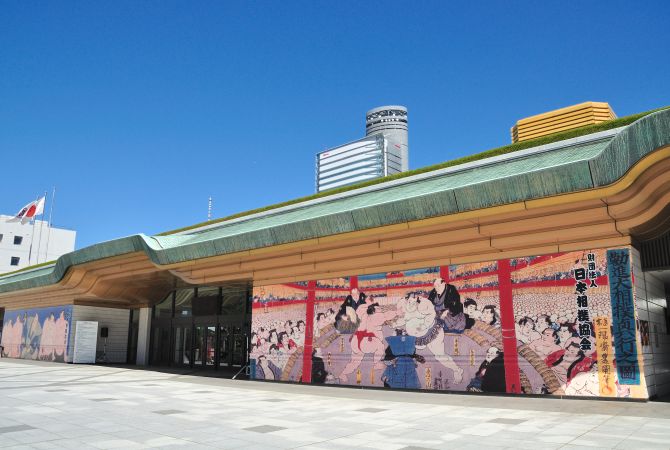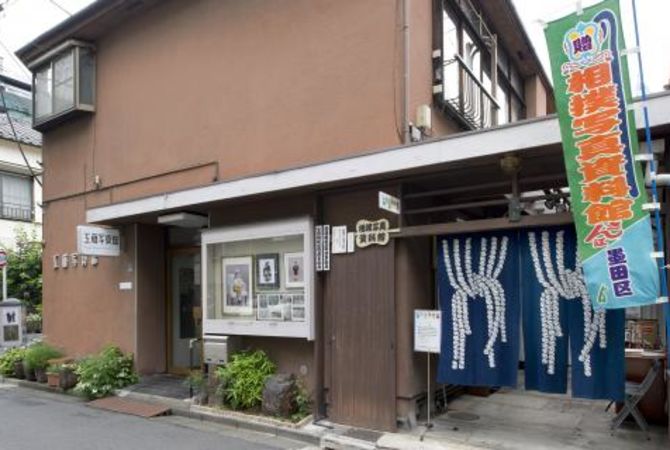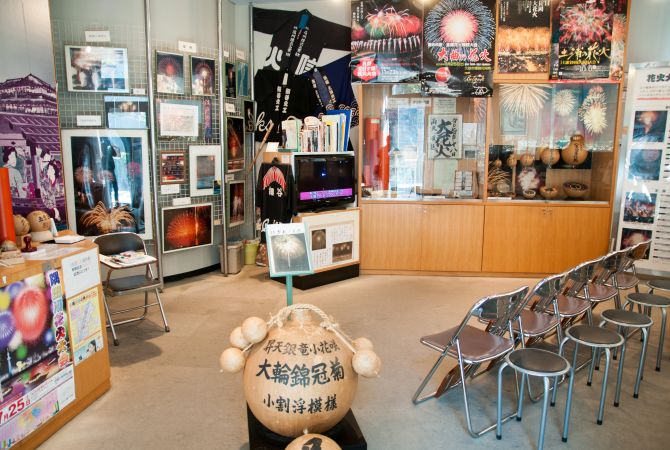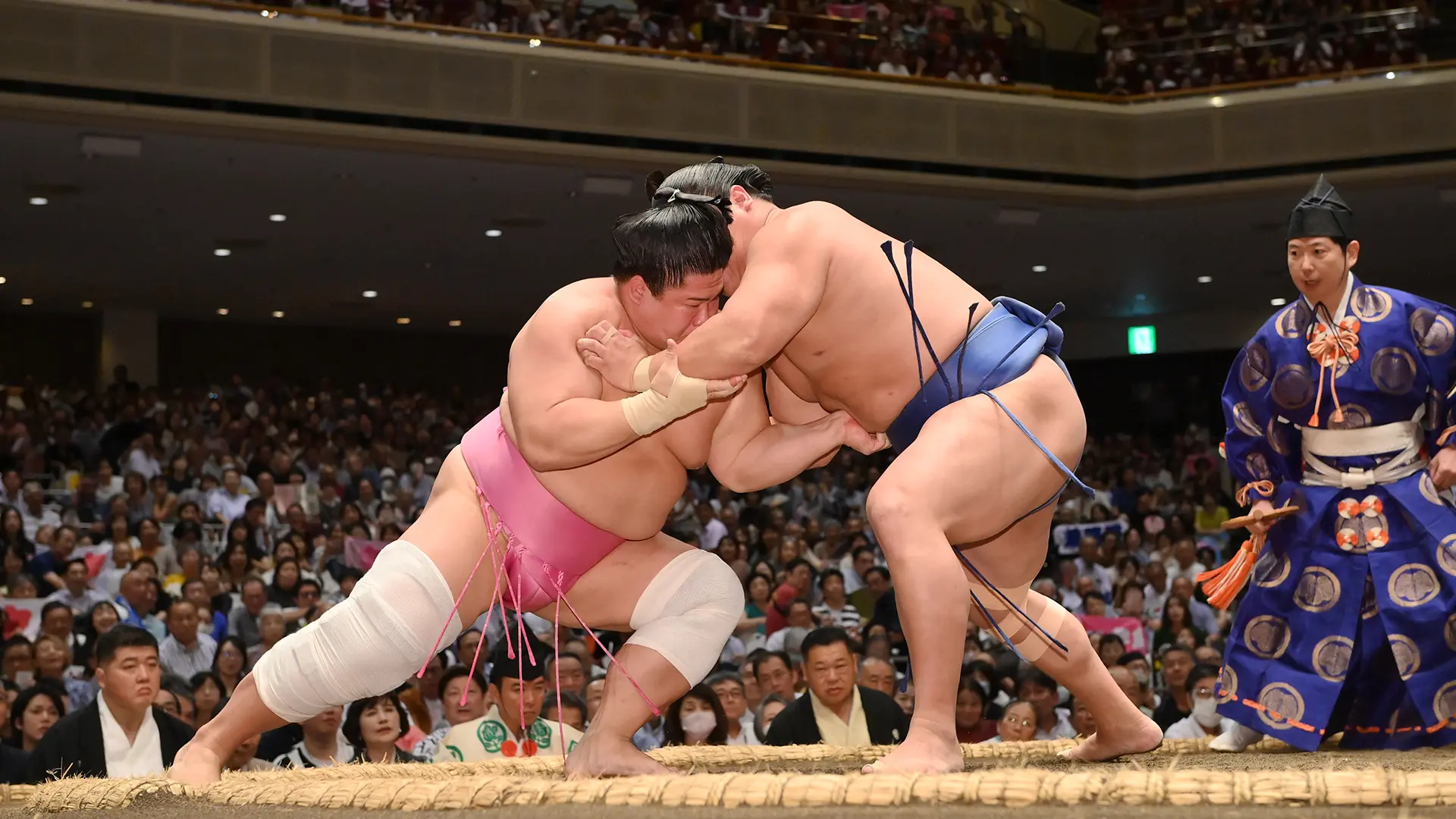
- Share this page
Share this page
- EN
Select Language
- FAVORITES
- Search
Detailed search: You can do a detailed search by keyword, genre, time, area and tag.
Main content starts here.
- Visit Tokyo |
- EXPERIENCES |
- Best things to do in Tokyo tailored to your preferences |
- Sports |
- Sumo for the Win: Japan's National Obsession with Deep Cultural Ties
Updated: December 24, 2024
Sumo for the Win: Japan's National Obsession with Deep Cultural Ties
Sumo is an exciting style of wrestling unique to Japan, and often called the country's national sport. These heavyweight bouts were mentioned in ancient Japanese writings as early as the 700s, while the modern form that became standard in the Edo era (1603-1867) remains unchanged today. Today, sumo continues to draw crowds both young and old as one of Japan's most popular sports - right next to baseball.
This unique Japanese spectacle has centuries of history representing Japanese sports tradition and culture. How do the wrestlers get so big? Are they fat, or in supremely good shape? Why do they throw salt in the ring? And where can you buy tickets? Read on to learn more, and when you're planning your Japan travel itinerary, it's definitely worth catching a sumo wrestling match live.
Throw Down and Learn About Sumo, Japan's Beloved Form of Wrestling
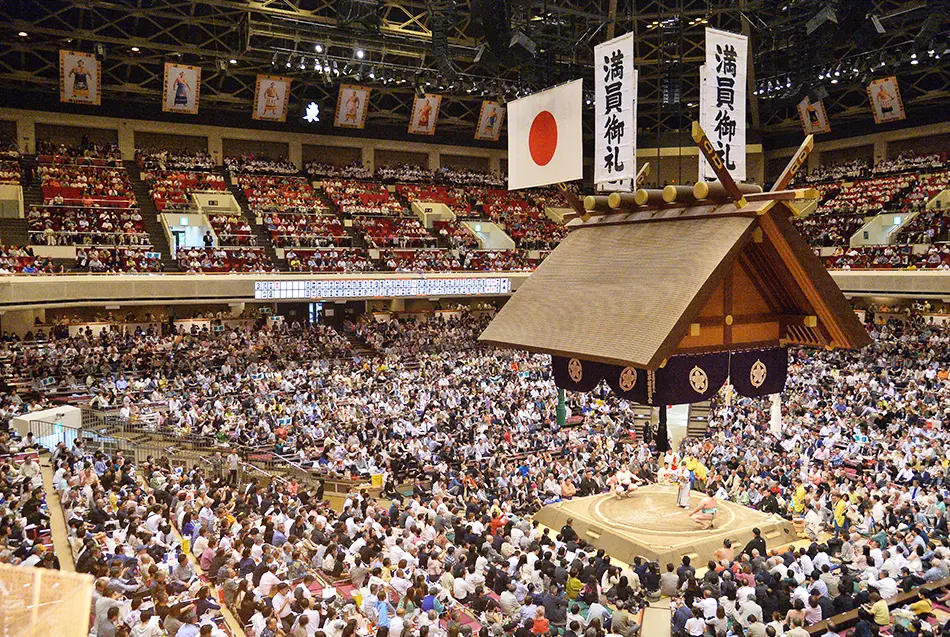
Incredibly, sumo wrestling was depicted in ancient cave wall drawings and Japanese religious texts mentioned it by name as early as the year 712. Today, the rules remain unchanged: the first wrestler to step outside of the "dohyo" ring or touch the ground with any part of their body (other than the soles of their feet) loses. That's it. No video replay, no electronic assistance - the results are judged by a group of professional referees lined up outside the ring. In rare cases, the result is inconclusive, resulting in a rematch.
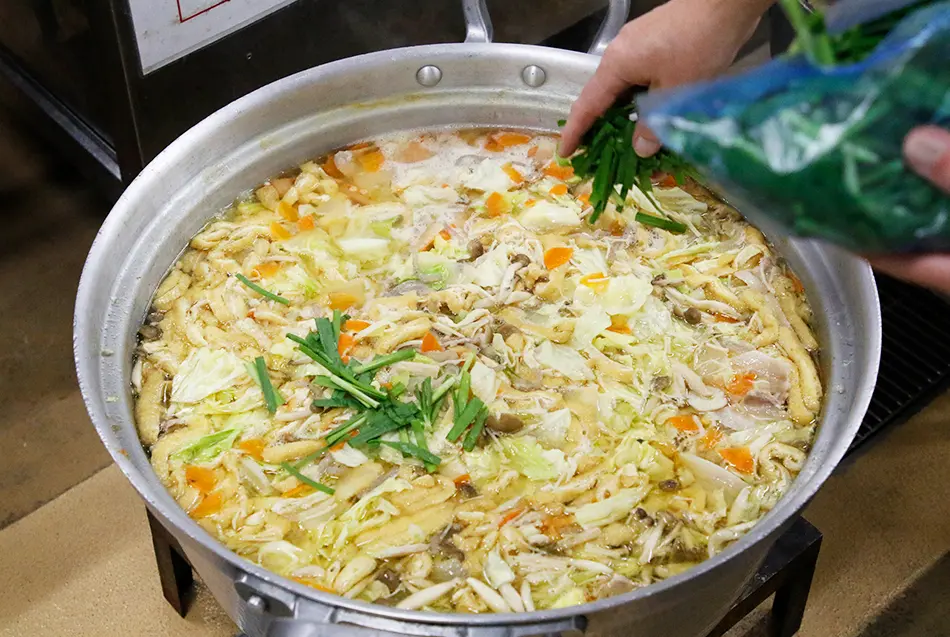
Sumo wrestlers are definitely huge - and they look almost fat to the uninitiated. They're renowned for their voracious appetites and epic diet, and the dish "chanko nabe" (aka "sumo stew," a hotpot concoction of chicken, pork, fish, sometimes beef, and vegetables) is very famous. Despite their looks, sumo wrestlers are positively jacked and strong as nails. They take their grueling training regimens in "sumo stables" seriously as they vie for the chance to become "yokozuna" or grand champion. In 2024, tickets for all 90 sumo match days sold out for the first time in 28 years, and current interest in the sport is at an all-time high.
The Best Times and Places to Watch Sumo Live
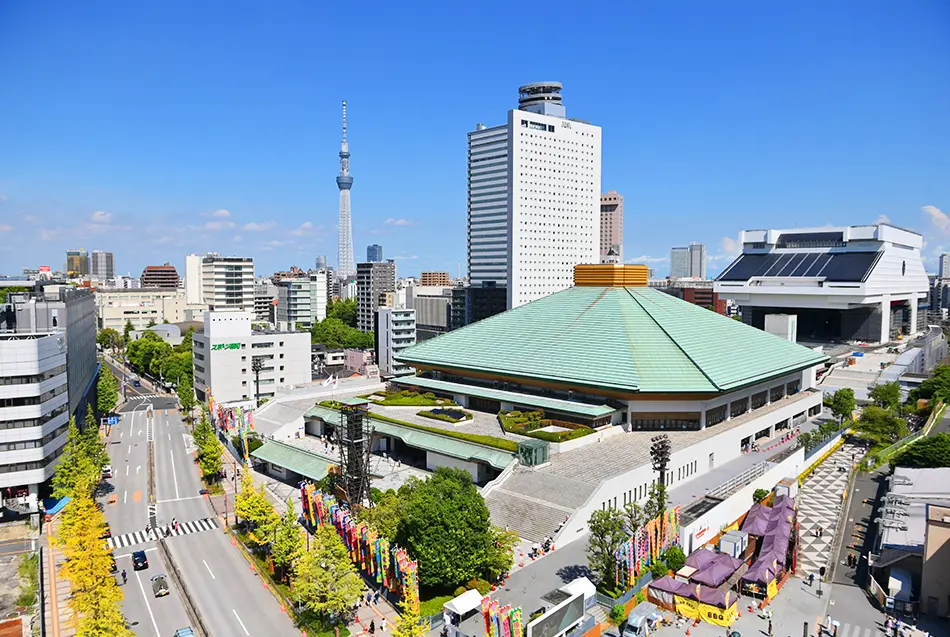
Sumo is practiced mainly in stables in Tokyo and the surrounding Kanto region. The real tournament action occurs largely in Tokyo, with some also held in Osaka, Nagoya and Fukuoka. In Tokyo, the Ryogoku Kokugikan serves as the holy mecca of sumo competition, in Ryogoku just southeast of Asakusa across the Sumida River. This storied venue is home to Japan's national sumo tournaments three times a year, in January, May and September. Tournaments are a full-day affair, starting in the morning with matches between lower-ranked contenders and finishing in early evening with battles between the highest-ranked sumo wrestlers.
There are a number of different seating options at the Ryogoku Kokugikan arena in varying price ranges accordingly. It's worth noting that the "box seats" are generally box seating for a group of four, with small cushions to sit on - likely a bit cramped by Western standards. If you'd like to enjoy the full day of action, a table seat with chairs is perhaps more comfortable.
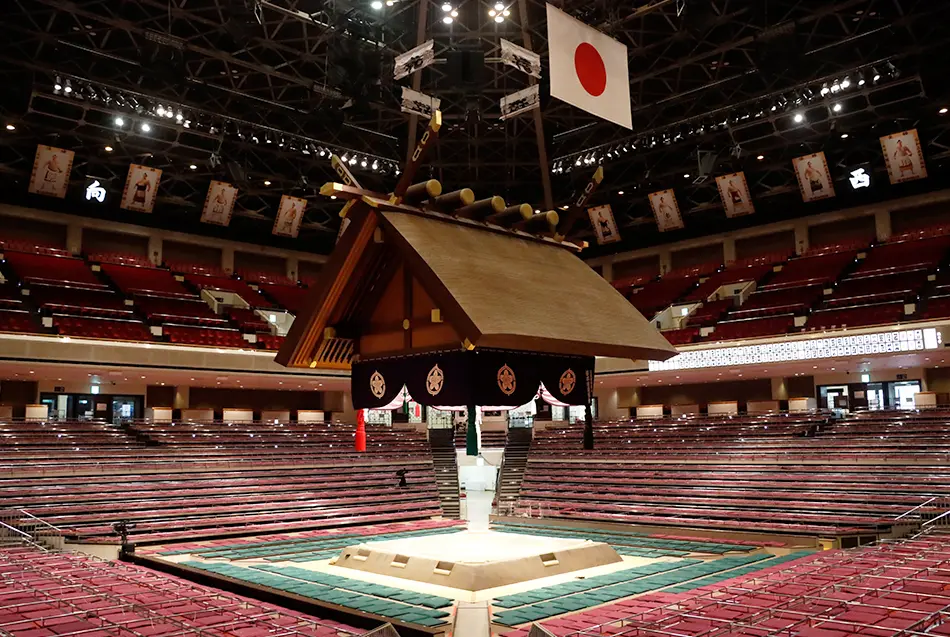
Sumo Rituals, Techniques and the Mawashi Belt

Sumo is a revered sport of respect and religious connotations. In a sense, the battle of brawn on display is a testament to the gods that inhabit all forms of life according to Japanese Shinto doctrine. One ritual unique to the sumo ring is the throwing of salt performed by every wrestler before a match. This is a purification ritual intending to ward off evil spirits and ask for blessing and lack of injury during the bout.
A sumo match is determined when one of the wrestlers either touches the ground or steps out of the "dohyo" ring. Sumo wrestlers can use many different moves to defeat their opponent but in general, as long as it's not a closed fist, face slaps, shoulder chops and other aggressive moves are all on the table. The sumo belt, called "mawashi" is a crucial aspect to the bouts, including grabbing the opponent by the belt to try and force them out of the ring.
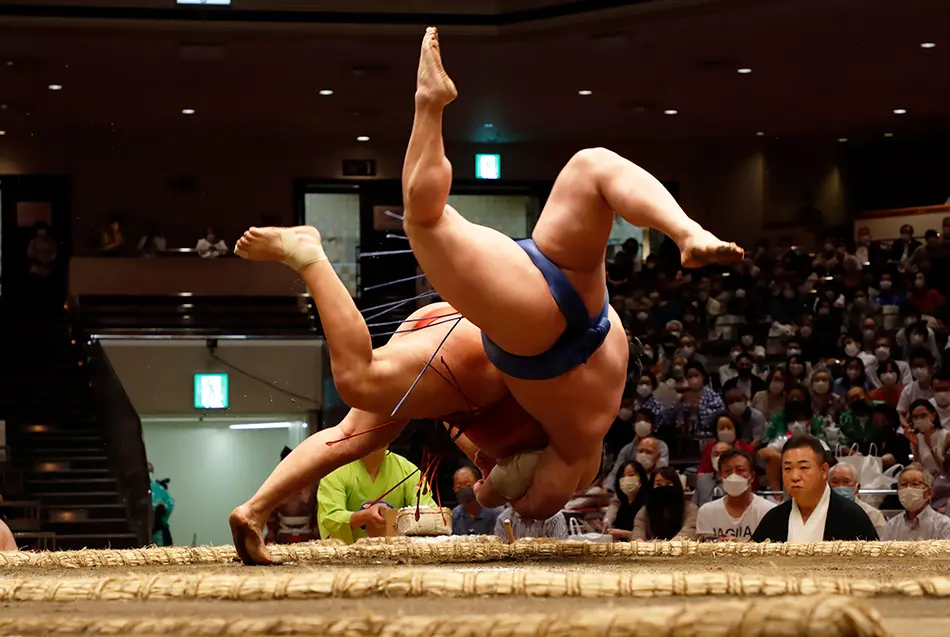
Around the Ring: Sumo Cultural Norms, Etiquette and More
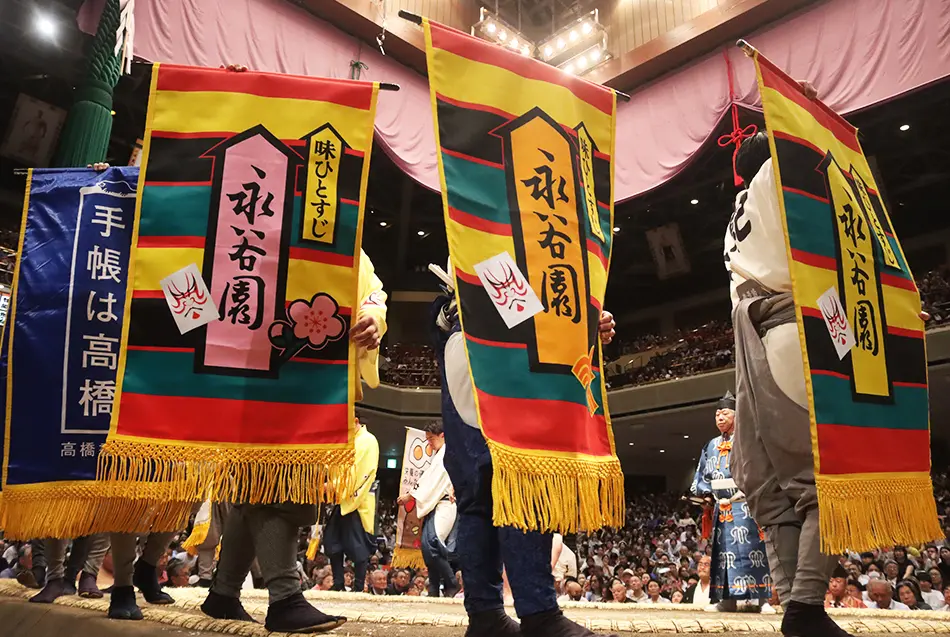
Even in 2024, sumo is decidedly old school, and there aren't any TVs inside the arena. Sponsoring companies are displayed on cloth banners carried around the ring before matches start. While the atmosphere is respectful, the crowd gets rowdy and loud, especially during epic matches.
Sumo is a fun and exciting event, and the arena has many options for alcoholic beverages and great traditional food. There are also many vendors selling merchandise for individual sumo legends. Come hungry or thirsty, and ready to take in the action. Lastly, the famous "chanko nabe" sumo stew can be enjoyed at many establishments around the Ryogoku Kokugikan arena. If you want to see how sumo feast, it's a great way to dig in and enjoy.
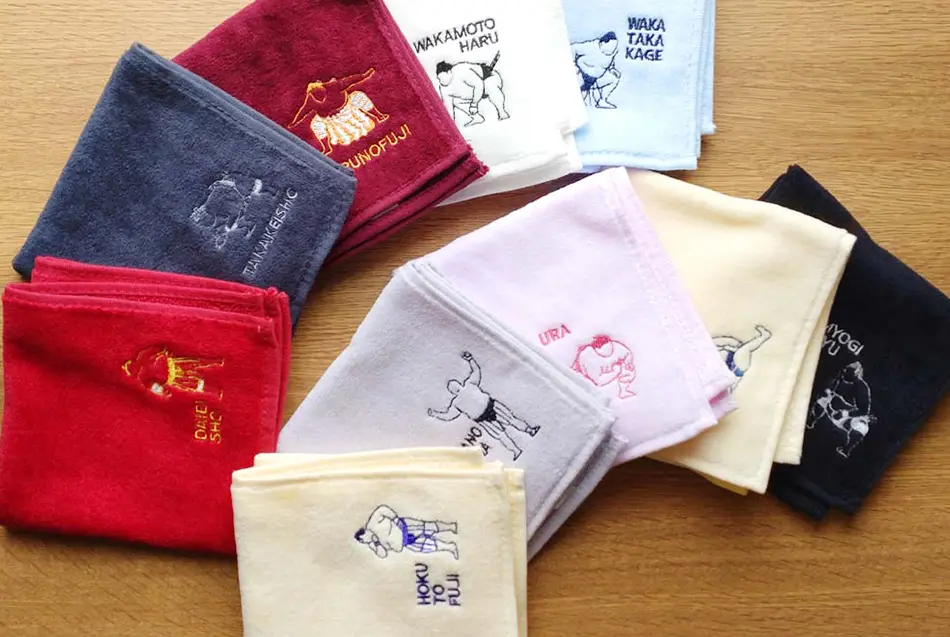
Get in on the Action: How to Buy Sumo Tickets
Sumo is very popular and tickets should be reserved well in advance. Thankfully there are a number of avenues to make reservations in English. As mentioned, the different box seats are actually floor seating, but given that sumo is a long event, many visitors may benefit from opting for the seats with table option. Check out the links below.
tickets (sumo)Photo courtesy of Nihon sumo kyokai
